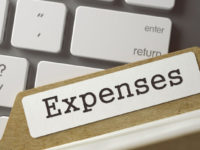A new study conducted by H&R Block and Officeworks has revealed that a staggering 85 per cent of small-business owners in Australia have never used the $20,000 instant asset write-off tax break (a total potential loss to taxpayers of $2.4 billion).
The national survey found that although the instant asset write-off for small businesses has been extended until 30 June 2019, nearly a third of all small business are hindered by a lack of understanding and education around how the $20,000 tax break works, with one in four small businesses also blaming a lack of organisation and time.
Even more surprisingly, 58 per cent of small businesses claimed to have never even heard of the instant tax write-off, which offers businesses with an annual turnover of up to $10 million the opportunity to claim an immediate write off on capital purchases costing less than $20,000. While this is a 20 per cent increase in awareness from a similar study conducted by H&R Block and Officeworks last year, nearly two thirds of small businesses admit to feeling frustrated at the lack of awareness.
The question is, why is knowledge and up-take of the tax break so low? My theory is that when it comes to tax, there’s a perception amongst small businesses that it’s always bad news – more red tape, more compliance, more money to pay to the ATO. In reality, sometimes the tax system can work to the advantage of small business and the $20,000 instant asset write off is a classic example of that.
In short, many small businesses prefer to steer away from anything to do with tax – it’s a complicated subject and they think they can leave it to their accountant.
Part of the responsibility must also fall on accountants unfortunately. Speaking as an accountant myself, we owe it to our clients to tell them about the tax break, explain the benefits and encourage them to use it where it will work for their business.
Quite simply, there are clear links between a business with the capital investment it needs to succeed – whether that’s the latest plant and equipment, up to date computer systems or a customer friendly office or shop – and increased productivity and profitability. So, if the government is prepared to further sweeten the pill by throwing in a tax break that will boost cash flow, that can only be a good thing so far as in-the-know small businesses are concerned.
So, what do you need to do to claim the tax break? Well, it’s very easy to claim. Simply buy the asset you need, keep the receipt, then put in a claim for a deduction for the whole cost in your tax return. In the old days, you’d have to write-off the cost over several years, now you get the full deduction in one hit.
So, despite a clear lack of awareness about the $20,000 instant tax write-off among many small businesses, it has been a great boost to those who have used it and the Government has responded to its popularity by extending its “shelf-life” to 30 June 2019. Really, any small businesses with a requirement for capital investment (whether technology, plant and equipment or motor vehicles) should be looking to take advantage of this scheme while it lasts.
Mark Chapman, Director of Tax Communications, H&R Block
















